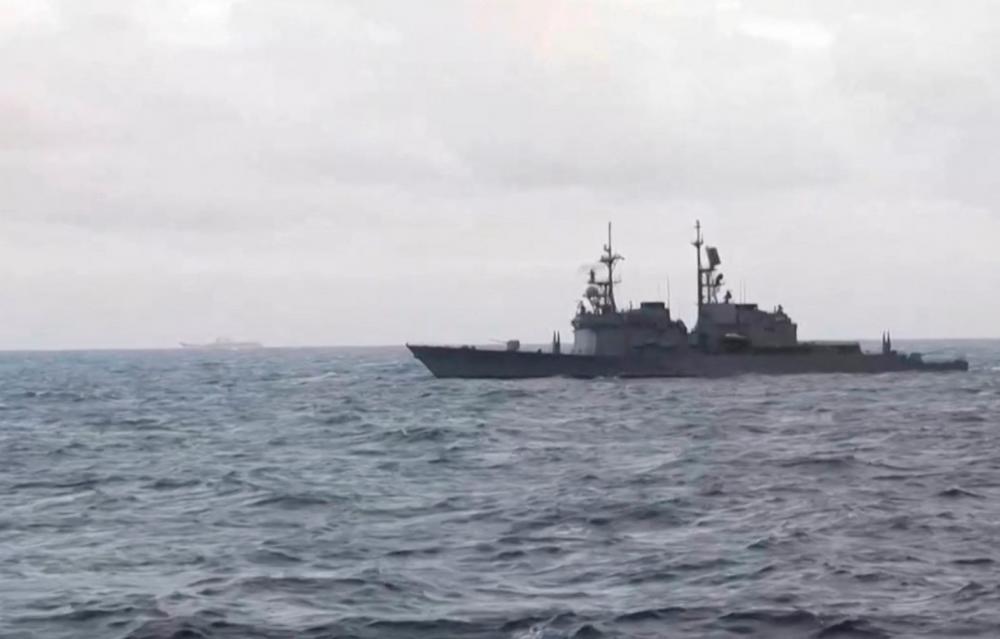BEIJING: China has launched some of its biggest military drills around Taiwan in months, in what it said was a “warning” to separatist forces on the island.
Here, AFP looks at the Taiwan Strait, a critical waterway and growing military flashpoint:
- Where is the Taiwan Strait? -
The strait separates the eastern Chinese province of Fujian from the main island of Taiwan, home to around 23 million people.
At its narrowest point, just 130 kilometres (about 80 miles) of windswept water separates the two major landmasses, and several outlying Taiwanese islands -- including Kinmen and Matsu -- lie just a few kilometres from the Chinese coastline.
China and Taiwan have been governed separately since Mao Zedong's communist army won a civil war and sent the opposition nationalist forces fleeing across the strait in 1949.
Beijing has maintained ever since that the island is part of its territory, and has not ruled out using force to bring it under control.
Why is it important?
The strait is a critical artery for global shipping through which a huge volume of trade passes every day.
Around $2.45 trillion of goods -- more than a fifth of global maritime trade -- transited the strait in 2022, according to the Center for Strategic and International Studies, a Washington-based think tank.
Taiwan plays an outsized role in the global economy thanks to producing over 90 percent of the world's most advanced computing chips, used in everything from smartphones to cutting-edge military equipment.
Analysts say a Chinese invasion would deal a catastrophic blow to these supply chains.
More minor disruptions, such as a blockade of the island, would cause costly shipping cancellations and diversions that would impact worldwide consumers.
“In the event of a long conflict over Taiwan, financial markets would tank, trade would shrivel, and supply chains would freeze, plunging the global economy into a tailspin,“ Robert A. Manning, a China expert at Washington’s Stimson Center, wrote last year.
A report by the Rhodium Group estimated that a blockade of the island could cost firms dependent on Taiwan's chips $1.6 trillion in revenue annually.
An invasion would also endanger Taiwan's way of life, embodied by its democratic freedoms and boisterous elections.
It would also risk a wider conflict because the United States, while not recognising Taiwan diplomatically, has an agreement to help the island defend itself.
What do we know about the drills?
China announced the drills early on Tuesday morning, describing them as a “stern warning and forceful deterrent” against alleged separatist forces on the island.
Beijing said the exercises -- which unlike previous iterations do not have a formal name -- “focus on sea-air combat-readiness patrols, joint seizure of comprehensive superiority” as well as “assault on maritime and ground targets”.
They also, crucially, practice a “blockade of key areas and sea lanes to test the joint operation capabilities of the troops” in the event of war.
Taiwan dispatched its own aircraft and ships, and deployed land-based missile systems, in response to the exercises and accused Beijing of being the world’s “biggest troublemaker”.
Has this happened before?
China has ramped up pressure on Taiwan in recent years and has staged four large-scale military exercises around the island since 2022.
In October, Chinese forces deployed fighter jets, bombers and warships in areas to the north, south and east of Taiwan, and simulated a rocket strike in drills called “Joint Sword-2024B”.
The manoeuvres came after Taiwanese President Lai Ching-te gave a speech on Taiwan's national day that Beijing viewed as a provocative move towards independence.
Beijing launched other drills -- “Joint Sword-2024A” -- in May following Lai’s inauguration, and encircled Taiwan in April 2023 after his predecessor Tsai Ing-wen met with then-US House Speaker Kevin McCarthy.
Taipei military expert Su Tzu-yun told AFP that Tuesday’s drills appeared to be of similar size to the “Joint Sword” exercises in May and October.
Taiwan in February also said China had staged a combat drill with aircraft and warships in “live-fire exercises” about 40 nautical miles (74 kilometres) off the island’s south. China dismissed the accusations as “hype”.
Several major crises flared across the strait in preceding decades, most recently in 1995 to 1996 when China conducted missile tests around Taiwan.









